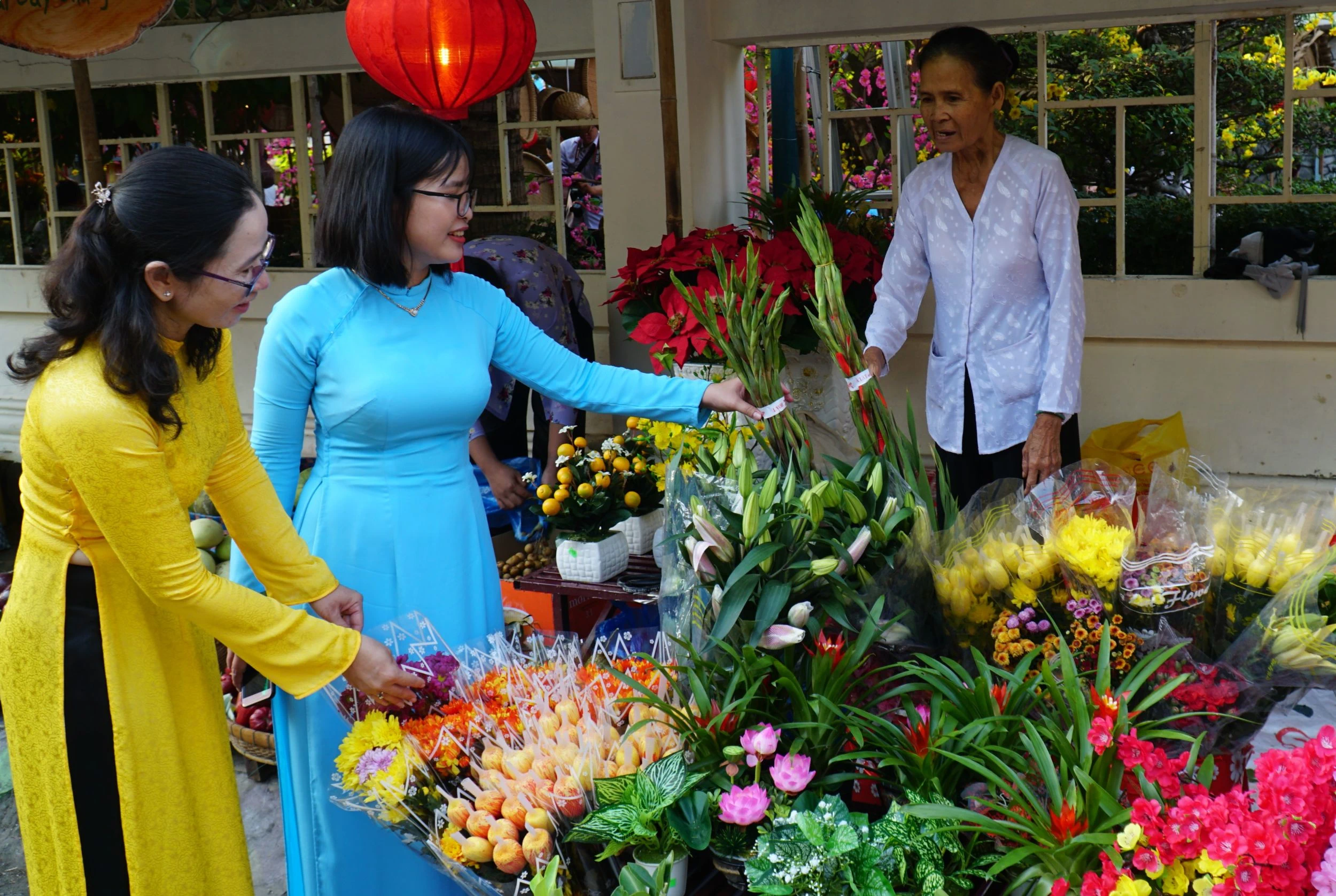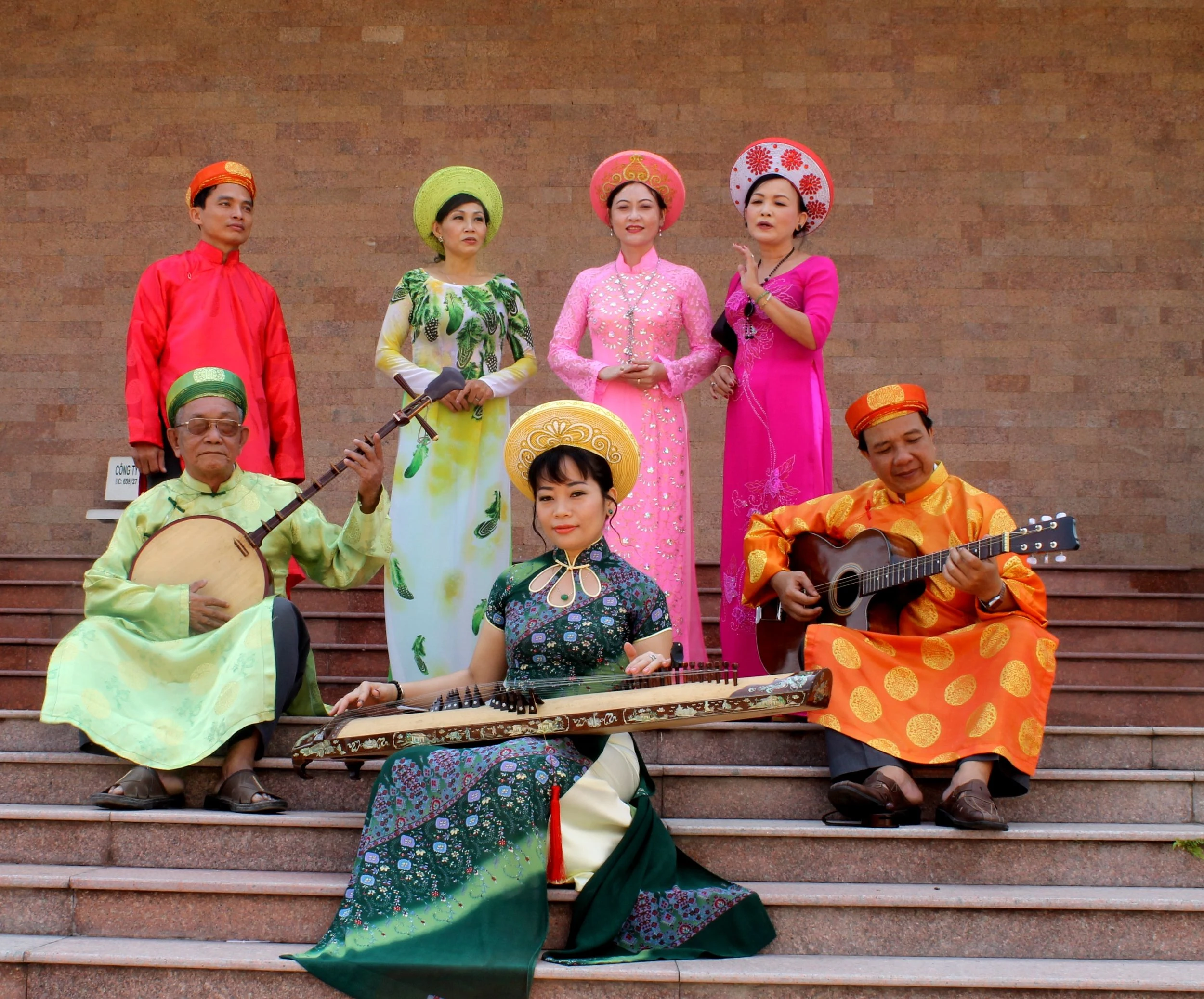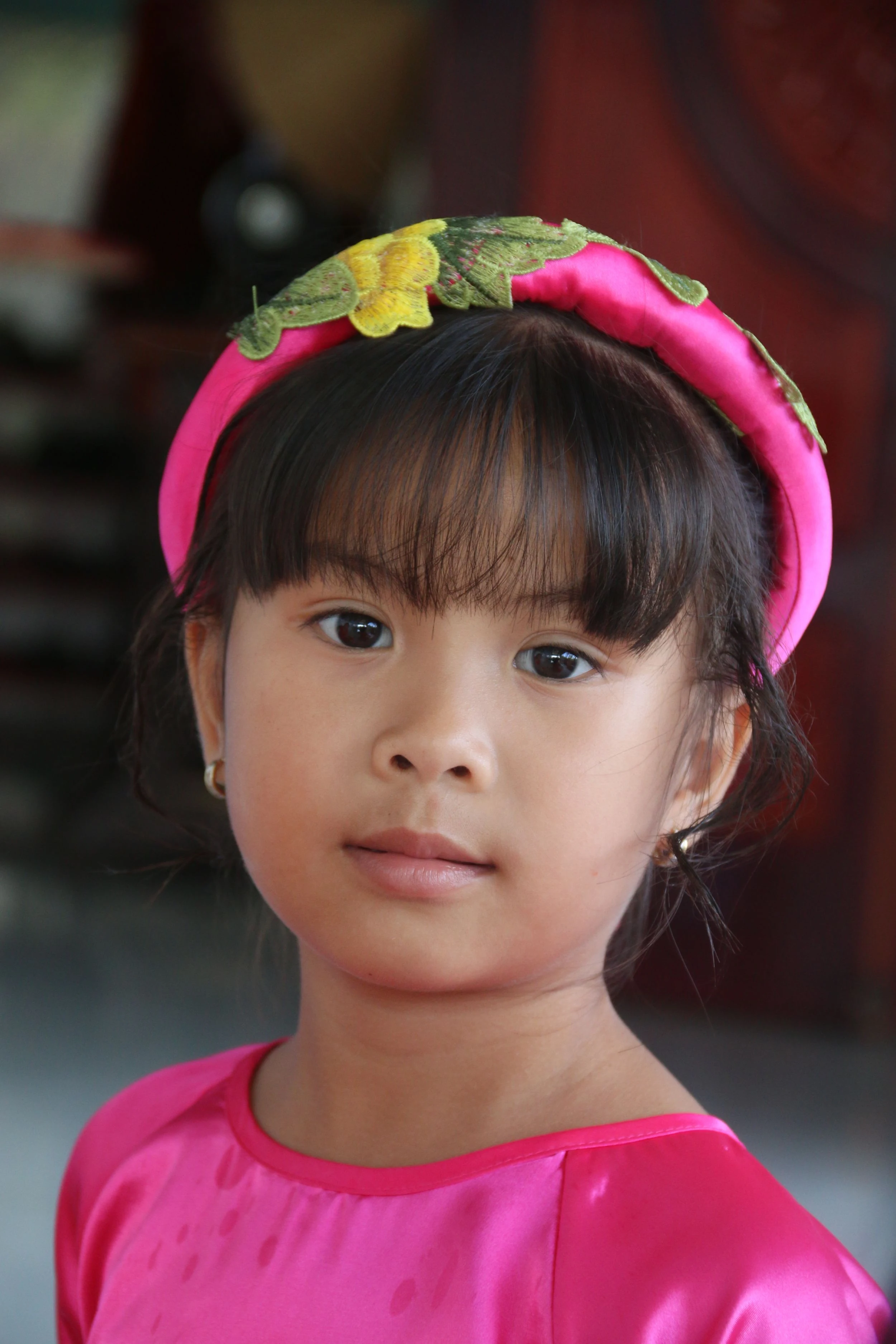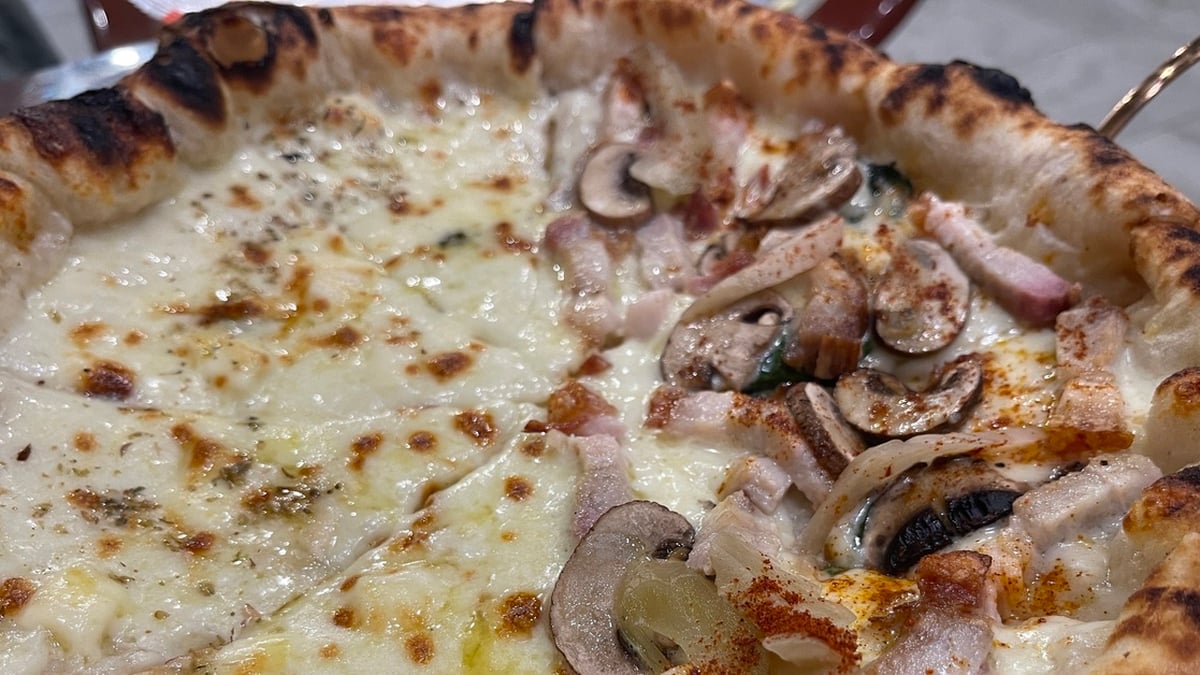Jewelry is not only to beautify the wearer, but in folk beliefs it is also an asset, a means of self-defense, a savings for each person. In addition, jewelry is also used in rituals and customs, such as in marriage. This article would like to help readers initially understand the concept and folk customs in general and in the South in particular about jewelry.
Can Tho women in traditional costumes and jewelry on Tet holiday. Photo: DUY KHOI
Since prehistoric times, Vietnamese people have known how to use shells, animal bones, etc. to make jewelry. However, at this stage, jewelry was mainly seen as amulets, intermediaries to pray to supernatural forces for peace and prosperity. Gradually, jewelry took on the additional function of beautification. "In the early Neolithic period, in the Hoa Binh culture (the cradle of this culture is located in Northern Vietnam and its distribution spread throughout Southeast Asia), dating back about 11,000 to 7,000 years ago, in Vietnam, the first real jewelry of primitive people was found. That is where the necklaces strung from shells, seeds, and animal fangs were identified as the earliest relics of the Neolithic jewelry type, found in Hang Bung, Hoa Binh ... In addition to materials made of bones and animal horns, they also used stones - stones with natural colors such as green stone, white stone, yellow stone, gray stone ... to make jewelry. All of those early necklaces and bracelets were used for spiritual purposes - as amulets to protect the wearer from powerful nature and lurking wild animals. At the same time, they expressed the desire The gods' blessing for humans to hunt and gather a lot, the wish for fertility and growth. And from there, the need to decorate oneself appeared" (1).
In addition to providing additional beauty, the materials used to make jewelry have also changed over time. At first, the materials used to make jewelry were animal bones, snail shells, and seashells, which were later replaced by copper, silver, and then gold. These metal materials are both more durable and more beautiful.
In the South, women's jewelry mainly includes brooches, ear hooks, earrings, rings, bracelets, necklaces, rings... Men mainly wear necklaces and rings.
A group of amateur musicians in traditional costumes and jewelry. Photo: DUY KHOI
There are two types of hairpins: vibrating hairpins and butterfly hairpins. "A vibrating hairpin is a hairpin that has small metal wires dangling in front of the face. When attached to the hair and the wearer moves, it vibrates slightly. A butterfly hairpin is a hairpin that stands in one place but the face of the hairpin is made to resemble two butterfly wings" (2). Wearing a hairpin on the head, in addition to keeping the hair neat, also helps to enhance the gentle beauty of women:
"Afternoon looking towards Suzhou mountain
Seeing you carrying water and a hairpin on your head
Tortoiseshell hairpin, my hair I put in
His eyes looked at me, so pitiful.
The tortoiseshell hairpin was a precious item of Ha Tien at that time. The tortoiseshell is also known as the sea turtle, the tortoiseshell's back is covered with thirteen scales, the tortoiseshell scales are a rare and precious product. Through the skillful hands of artisans, tortoiseshell scales are made into many beautiful and valuable jewelry or souvenirs. Like other jewelry, the hairpin is also made of gold, silver... used as a wedding gift:
"Mom! Your son is a good man.
The boat went to talk about a thousand things.
money
Don't believe it, open the box and see.
The hairpin is under the west gate.
above" (3).
In addition to hairpins, in the past people also used ear hooks to tuck in their hair. "Ear hooks were always made of hard metals such as copper, silver, iron. In the past, when men still tied their hair, both men and women used ear hooks. After that, only those who still tied their hair used ear hooks" (4). Therefore, there is a saying in Southern folk songs:
"I rub my hair
He tucked the copper hook.
Will I wander in the future?
Meet me at Ba Giong intersection".
Popular and meaningful jewelry in weddings is earrings. "In the past, silversmiths often made two types of earrings: 6 small ruffled ears forming the face of the flower and bud flower - the face of the flower looked like a lotus flower about to bloom. In the past, earrings were usually made of gold (24 carats), sometimes of marble or copper, sometimes of stone or pearl (worn a lot in Ha Tien), only the very rich could afford diamond earrings. After 1945, a new type of earring called dangling earrings was added. The face of the earrings changed many times. In addition to pure gold (24 carats), Western gold (18 carats) was more popular among young people. Clip-on earrings were also widely used, especially by young people and artists. Since then, earrings can be made of silver, rubber, chemicals, paper, etc. And almost no one wears pearl earrings anymore, except for one or two old ladies in Ha Tien town" (5).
Wearing earrings for the bride was almost a mandatory ritual in ancient weddings. No matter how poor the groom's family was, they would try to buy a pair of earrings for their daughter-in-law. Other things could be omitted.
"One day I'm far from you
I will return the earrings, I will ask for the gold.
Why do I return the earrings and ask for the gold? Gold here broadly means a gold bracelet. The gold bracelet is two gold bracelets worn on the wrist. The reason the wife here has to return the earrings to her husband is because it is a dowry from the husband's parents to their daughter-in-law, so when the girl is no longer a daughter-in-law, she must return it to her husband's parents. The gold bracelet was bought by the husband and wife working together, so she asked her husband to let her own it.
A common piece of jewelry for girls is earrings. Earrings are mainly worn by young girls or young women, adults rarely wear earrings.
Neck jewelry mainly consists of necklaces and bracelets. Necklaces consist of two parts: the chain and the pendant. As for the chain, in the past, the chain was usually made of pure gold; after 1954, the chain was made of all kinds of metals (such as yellow gold, silver, white gold...), sometimes of all kinds of chemical chains.
As for the face, in the past, necklaces had two types: a glass face and a regular face; after 1954, glass faces were increasingly considered old-fashioned. Older pendants were usually made of pure gold, sometimes marble or jade. From 1945 onwards, diamond pendants were considered the most luxurious; in addition, there were silver or yellow gold faces, or inlaid with colored diamonds, which sparkled almost like diamonds.
Girl with age-appropriate earrings. Photo: DUY KHOI
Regarding bracelets, there are two types (carved and plain). Flower-carved bracelets were popular before 1945, especially those carved in the "one poem one painting" style, which were considered fashionable. After 1954, plain bracelets were considered beautiful; but gradually women no longer liked to wear bracelets, except during wedding ceremonies. In the past, bracelets were usually made of gold, silver, or copper. After 1945, silver or copper bracelets were no longer seen (6).
On the wrist there are bracelets and anchors; on the fingers there are rings and necklaces also made in many different styles and materials such as gold and silver.
It can be said that jewelry is a popular item and plays an important role in the lives of the people of the South. "Over thousands of years of history, jewelry has developed in terms of design, wearing position, decoration method, material, and manufacturing technology. In each different historical period, jewelry represents the unique characteristics of Vietnamese life in each period, but in general, jewelry is still a non-verbal language expressing the wishes of the user, inheriting and developing along with the life of the country" (7).
---------------------
(1) Nguyen Huong Ly (2023), "Jewelry in the developing life of Vietnamese people", Culture and Arts Magazine, No. 530, April, p.92.
(2) Vuong Dang (2014), "Southern customs", Culture and Information Publishing House, p.361.
(3) Vuong Thi Nguyet Que (2014), "Vietnamese women's jewelry through folk songs", Can Tho Literature and Arts Magazine, No. 77, p.20.
(4) Vuong Dang, ibid, pp.361-362.
(5) Vuong Dang, op. cit., pp. 362-363.
(6) Vuong Dang, ibid, pp.363-364.
(7) Nguyen Huong Ly, Tlđd, p.96.
Source: https://baocantho.com.vn/trang-suc-trong-doi-song-cu-dan-nam-bo-xua-a188919.html






































































































Comment (0)